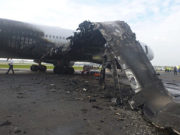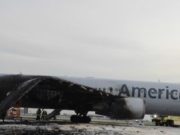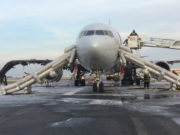
NTSB Urges Revised Checklist for Engine Fire Emergencies
Air carriers should be required to develop or revise emergency checklist procedures for dealing with…
Viewing 1 - 3 of 3 results

Air carriers should be required to develop or revise emergency checklist procedures for dealing with…
by FSF Editorial Staff

News, Accident/Incident Investigation
NTSB report also details problem with evacuation following rejected takeoff.
by FSF Editorial Staff

News, Accident/Incident Investigation
A U.S. National Transportation Safety Board meeting to determine the probable cause of an October…
by FSF Editorial Staff
